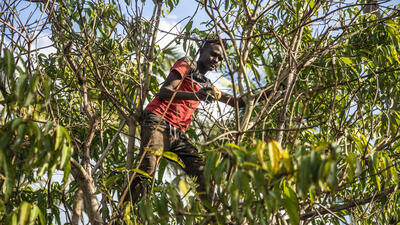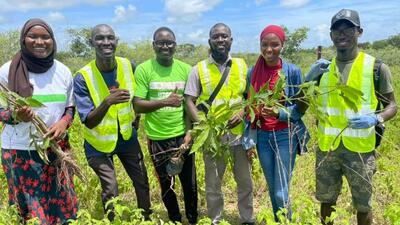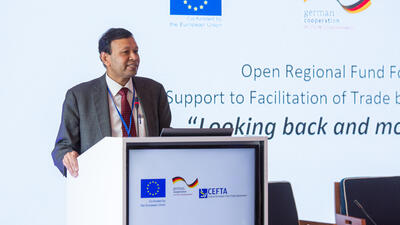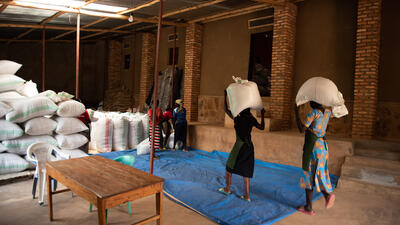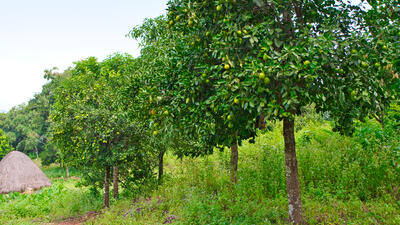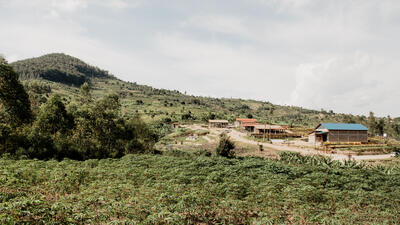Reducing non-tariff barriers along East Africa’s Northern Corridor
Cooperation among East African government agencies has cut by half the time it takes to drive along one of the region’s busiest transport routes, the 1,700-kilometre Northern Corridor (see map).
Earlier this year, Emmanuel Rutagengwa, then a consultant for the Ministry of Trade and Industry of Rwanda, took a truck ride to understand first-hand the effects of non-tariff barriers (NTBs) along the route as part of a study commissioned by the Ministry and funded by TradeMark East Africa. As a passenger in a truck carrying a shipment of tea from Kigali, Rwanda, to the Port of Mombasa in Kenya, he saw the driver stopped numerous times by officials at weighbridges, police roadblocks and border crossings, and having to pay a bribe in order to pass.
‘If you want to see the challenges the drivers go through, put someone on the truck,’ Rutagengwa told International Trade Forum. ‘It makes it easier to know the experience of the truck driver, the experience of moving cargo from destination A to destination B.’
The journey taken in early January spanned six days, and the cost of bribes along the way amounted to US$ 846.83.
However, if the Rwandan Ministry of Trade and Industry were to commission the same study now, the number of bribes would be drastically reduced and the trip could take as little as three to five days.
Why this difference? Since the study featuring Rutagengwa’s findings was published in May, policymakers in Rwanda, Uganda and Kenya have cracked down on corruption and delays by passing initiatives to reduce the number of weighbridges and police roadblocks. The study found that weighbridges account for 93% of the value of bribes along the route.
Policymakers take action
Rutagengwa spent a total of 79 hours – or 65% of the travel time – waiting at border posts, police roadblocks, weighbridges and other stops that were necessary because of poor road conditions and mechanical problems with the truck.
Only about 42 hours – or 35% of the time – was spent driving.
The Rwandan government has used the study, called Experiential Survey on Non Tariff Barriers Along the Northern Corridor, as well as similar studies conducted in 2008 and 2010, to make policy and structural reforms and to work with Uganda and Kenya to reduce the number of NTBs in their countries.
A trilateral meeting held on 25 June in Entebbe, Uganda, between the heads of state of Rwanda, Uganda and Kenya, resulted in a measure requiring trucks to be weighed only once in every transit country, rather than at eight different weighbridges between Kigali and the Port of Mombasa.
The heads of state also agreed to revamp the existing railway network and to construct a new standard gauge railway line and extend it to Rwanda. The project is expected to be completed by March 2018.
‘This corruption thing happens on the roads,’ Rutagengwa said. ‘You find that less than 5% of cargo is on the railways. So rebuilding them, making them efficient, will protect the roads but also reduce the overall transport costs since railways are cheaper and the incidences of multiple stoppages are low compared to [those on the] roads.’
At the meeting, the leaders also agreed to create a single-customs territory to cut costs and to reduce the time needed to clear goods. Some customs officials of the Rwanda Revenue Authority and the Uganda Revenue Authority have since moved to the Port of Mombasa to facilitate the clearance of goods, saving exporters and importers both time and money.
Since August, all roadblocks from Kigali to the Port of Mombasa have been removed, according to the Rwandan Ministry of Trade and Industry.
Rutagengwa’s journey confirmed that corruption is a major factor affecting transport costs: 11 out of 26 roadblocks had cases of corruption, as did seven out of eight weighbridges.
‘The problem is that the people administering the weighbridges, they’re not strict,’ Rutagengwa said. ‘The intention of the weighbridges is to protect the roads, but they end up taking some money and allowing trucks to go through.’
At the border gates, half of crossing points attracted bribes, according to the study. But money wasn’t the only factor.
Waiting at border postsThe study also revealed that customs delays are largely due to inefficiencies by clearing and forwarding agents. Trucks driving from Rwanda to Kenya, or vice versa, face double the trouble because they pass through two borders: at Gatuna, between Rwanda and Uganda, and at Malaba, between Uganda and Kenya.
At the Malaba border post on the Kenyan side, while crossing over to Uganda, clearance of customs transit declarations can take between five hours and two days because of the slow clearing processes on the Ugandan side of the border. The process of clearing transit declarations at Malaba to enter Kenya can take up to 5 hours since declarations are sent to the headquarters of the Kenya Revenue Authority in Nairobi for clearance.
With the implementation of the single-customs territory later this year, and with customs officials now working at the Port of Mombasa to clear goods, processing times will be significantly reduced.
Addressing remaining challengesDespite the improvements, the time required to clear goods at borders can still be considerably high, according to Safari S. Vincent, Coordinator of the Rwanda National Monitoring Committee on NTBs at the Ministry of Trade and Industry.
However, the governments are working on introducing the electronic single-window system to ease cross-border cargo-clearance procedures, which will help Rwandan businesses save about US$ 8 million to US$ 17 million every year on customs costs, according to the study. The system will allow traders to submit customs documents online, cutting the time required to clear goods by 40%.





